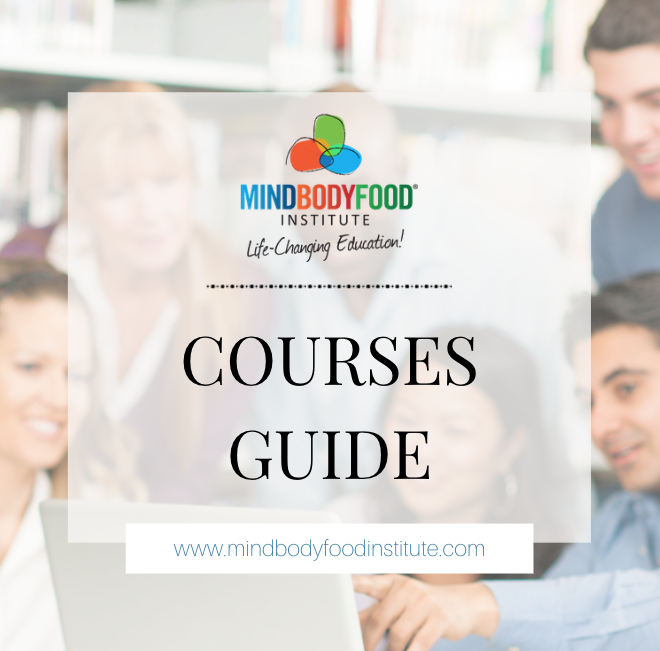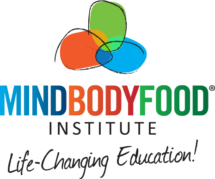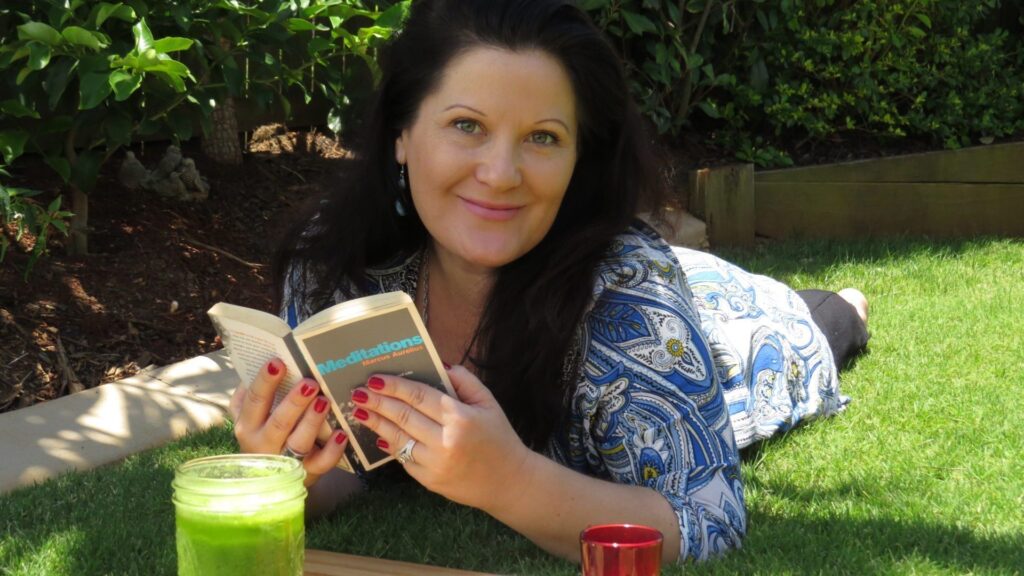Tension headache? Panic attacks? Chronic pain? We’ve all heard speak of the mindbody connection these days, and about the effects of stress and trauma on one’s overall health. It is becoming well accepted that chronic stress and anxiety can worsen or contribute to a variety of symptoms, ranging from fibromyalgia symptoms, IBS, to more serious illnesses like MS and cancer (1).
But something is missing in this conventionally upheld perspective on stress and health, and it is this missing truth that I hope to shed some light on in this article.
I think we’re at a time when, in order to survive and lead a healthy life in this increasingly challenging world, we need to go even deeper than presuming that ‘stress’ or negative emotions can simply worsen or contribute to symptoms.
Physical vs Emotional: and why one doesn’t exclude the other
In my work as a Chronic Pain Coach and MindBody Practitioner, I’ve seen too many sufferers trying to determine whether their symptoms are ‘all in the mind’ or, whether there is good reason to believe that it’s the body that is damaged or ill.
Initially, I myself was guilty of this separation, believing that what we know of as ‘psychosomatic’ symptoms were a totally separate class of symptoms from other symptoms that are physical in nature, such as those involving noticeable inflammation, chemical imbalances and even autoimmune responses.
But as I dipped into Neuroscience and Psychoneuroimmunology – a branch of Science which studies the interactions between emotions on the one hand, and neural, endocrine, and immune processes on the other hand – I started to form different conclusions. These conclusions have been backed up by research on trauma and PTSD, wherein dozens of papers have established a link between childhood trauma and one’s likelihood of developing certain conditions like fibromyalgia, multiple sclerosis and even various forms of cancer as well as heart disease (2), (3).
The physician and trauma expert Gabor Maté summarizes this state of affairs pretty well in his recent book, The Myth of Normal, which is a must read for anyone dealing with chronic conditions or serious mental health issues.
In his opinion, the separation between mind and body in healthcare is ‘unnatural’, and is contrary to our ancestral knowledge, and to the truth itself as evidenced by so many studies:
“There is nothing novel about the notion of the mind and body being intricately linked; if anything, what is new is the belief, tacitly held and overtly enacted by many well-meaning doctors, that they are separable.” (4)
As Maté explains, different emotional states, especially chronic states induced by traumatic memories, can keep on causing heightened anxiety even later in life, and initiate different processes in the body that can lead to disease.
“From the cerebral cortex to the brain’s emotional nuclei to the autonomic nervous system, from the solid or fluid aspects of the immune apparatus to the hormonal organs and secretions, from the stress-response system to the viscera… it’s all one.”
It’s for this reason that he argues that it may be time for the term ‘mindbody connection’ to be replaced by the more unified ‘bodymind’. Because really and truly, these two can never ever be separated.
The links between stress and inflammation
Stress itself has been shown to be a huge contributor to inflammation, which is the main factor behind many diseases, including cancer. It’s estimated that around “75%–90% of human diseases is related to the activation of stress system”, and it is undebatable that “chronic inflammation is an essential component of chronic diseases” (5).
So what is the antidote to stress? Without exception, getting out of the stress response involves regulating the nervous system, which is our internal system that regulates our fight, flight and freeze responses. When this gets dysregulated following our response to distressing experiences or toxic situations, it can lead to anxiety and depression at best. At its worst, it leads to marked inflammation, pain and illness.
And yet, the effort to integrate stress-reducing techniques and therapies in the treatment of chronic symptoms and illnesses is close to inexistent. The separation between mind and body is still very much an obstacle, blinding patients and physicians alike to the possibilities that might ensue from calming the nervous system, alongside any other required medical treatment. Once a physical cause is ‘found’ (e.g. chronic inflammation, or an autoimmune disease), all psychological explanations and treatments are usually brushed off as irrelevant and unimportant.
Maté addresses this issue in his latest book, severely criticizing the fact that medical professionals rarely ever ask their patients what they’d been going through prior to the development of any condition or illness. This failure is driven by certain beliefs and taboos that are prevalent in Western culture, where the biomechanical model (which looks purely at physical processes in the body) has clearly separated the physical from the psychological:
‘The mind-body stuff is historically something that one pursues at great peril to their career at Harvard’, a leading physician and academic at that hallowed institution told me recently”, Maté reports.
The implication is that although they acknowledge the ‘link’ or interconnectedness of mental and bodily processes, they choose to ignore this in order to avoid rejection by their peers. A sad truth, when you think about how many peoples’ lives are at stake.
Applying the knowledge to chronic pain or symptoms
As a Chronic Pain Coach, the first question I ask clients suffering from chronic pain is to go back to the year or two preceding the onset of symptoms, and to think about what kinds of distress they may have been facing back then. Almost without exception, ALL of them are quickly able to identify a highly distressing situation.
I consider chronic pain sufferers to be ‘luckier’ than those who have been diagnosed with other illnesses, just because the link between chronic pain and the brain is much more accepted and established than in other fields (such as autoimmune disease).
It also feels more acceptable for most people to address chronic pain from a mindbody perspective when compared to individuals suffering from diseases that have obvious structural manifestations and that also require medical intervention due to their severity, and sometimes, life-threatening symptoms.
And yet, this doesn’t mean that chronic pain sufferers have it easy either. When we get pain, we immediately set out looking for a structural explanation for it. Sometimes, we may get just that kind of explanation, as pain is blamed on imperfections, old injuries or wear and tear in the body, while labels like ‘fibromyalgia’ and ‘degenerative disk diseases’ are sparingly assigned to explain the origin of the pain.
This automatically puts the majority of sufferers in a position of being unable to envision the possibility that their brain, nervous system and emotions could really be at the core of their symptoms.
Taking responsibility for illness – a necessary yet painful decision
As human beings, we sort of like to find external factors to ‘blame’ our misfortunes on. It feels good for the ego to assume that ‘we are not to blame’ in all of this.
For many individuals, it is therefore a relief to receive a diagnosis that explains their symptoms, after having gone through months of fear and uncertainty. But while this can indeed be reassuring initially, living with the diagnosis without taking any form of responsibility can lead to a lifetime of symptoms. It puts people in a box and often blinds them to the possibility of recovery.
One of the most common diagnoses in the field of chronic pain is ‘fibromyalgia’, which is diagnosed based on the manifestation of multiple painful but non life-threatening symptoms in the body, sometimes accompanied by other digestive issues or chronic fatigue.
Just because someone is diagnosed with fibromyalgia, it doesn’t mean that this condition happened due to factors that were totally outside of ourselves. The links between fibromyalgia, trauma, anxiety and depression are already well established, and most sufferers are also able to identify distressing events that preceded the onset.
For improvement and healing to take place, therefore, one must ‘take responsibility’ for having responded emotionally to those events, and also for his or her present-day reactions to and beliefs about the symptoms themselves. This is because fear and helplessness towards symptoms can actually condition the same symptoms in the body and intensify them.
This can be very painful to take in, because it involves ‘admitting’ to having (unknowingly) responded in a dysregulated way to certain triggers. It involves shifting from a state of self-pity (i.e. X and Y have happened to me), to a state wherein one tries to make sense of why X and Y happened, and what one’s role in the story was or still is.
That said, the way we respond to external situations is not necessarily our fault either. It all depends on our background, on other distressing situations that may be happening in our lives, our levels of support, our environment, what kind of scary or hopeful messages we get from medical professionals, etc.
I’m therefore not suggesting putting the blame on ourselves. Instead, what I’m suggesting is looking at the bigger picture, and getting self-aware about one’s emotional state and limiting beliefs, and how these may be contributing to flare-ups and symptoms.
And that’s how it all starts. For some individuals the process kicks in after reading a mindbody book; for others (like myself), following a ‘lucky’ Google search for alternative healing modalities.
Like Maté, I wish it had started with timely questions posed by my healthcare professionals at the time, but sadly, the separation is still dominant in conventional practice, and none of them asked me about my mental state back then. Despite the growing body of research, it will take years for the unity of bodymind to become accepted, by professionals and patients alike.
In the meantime, thousands of people continue to seek physically-focused treatments to relieve their pain, and many are left disappointed. The reason for this being that if there are emotional factors that are keeping the symptoms alive, then addressing the symptoms in isolation can only bring temporary relief (if any).
It is also not uncommon for one condition to go away following medical treatment or surgery, only for another condition to ‘crop up’ shortly after. It is a natural way in which ‘the body keeps the score’, to use Bessel van der Kolk’s famous words. And until we truly find inner peace and balance (which leads to a more regulated nervous system), the body will keep sending these physical signals as warnings.
Your turn to spearhead your own health!
So what should you do if you suffer from chronic pain or symptoms?
I encourage you to think of your symptoms as just the tip of an iceberg. And then ask yourself, what kind of distress or negative emotional states could be festering underneath that tip? What happened in the months or year leading up to your symptoms that caused frustration, dissatisfaction or worry?
Accepting that there’s a psychological factor (or multiple emotional factors) that have led to your symptoms and that may be perpetuating them is always the first step. From then on, you can start learning how to become more self-aware, and how to respond differently to the symptoms themselves. A shift in perspective and a decrease in one’s levels of fear, helplessness and anxiety almost always bring about improvement, and for many chronic pain sufferers, even complete recovery.
Many individuals come into this work with high levels of skepticism, and end up finally finding all the answers.
To learn more on how to overcome chronic pain or symptoms specifically, in The MindBody Syndrome Practitioner Course we teach students about the Neuroscience and Psychology of Pain, and introduce them to effective emotional release tools and other brain rewiring techniques in order to eliminate chronic symptoms.
References:
- For a more detailed explanation and list of studies linking chronic stress with cancer, see ‘Stress and Cancer’, The National Cancer Institute
- One of the most important studies is the one related to how Adverse Childhood Events (ACEs) may affect health outcomes later in life. For more detail, see Erica M. Webster, EdD, ‘The Impact of Adverse Childhood Experiences on Health and Development in Young Children’, Glob Pediatr Health, 2022.
- For a study in relation to Fibromyalgia and psychological trauma, see Nermin Gündüz, et al., ‘Psychiatric comorbidity and childhood trauma in fibromyalgia syndrome’, Turk J Phys Med Rehabil. 2018.
- Gabor Maté with Daniel Maté, The Myth of Normal: Trauma, Illness & Healing in a Toxic Culture, Vermillion, 2022.
- Yun-Zi Liu, Yun-Xia Wang, and Chun-Lei Jiang, ‘Inflammation: The Common Pathway of Stress-Related Diseases’, Frontiers in Human Neuroscience, 2017.
Featured image by Joshua Earle on Unsplash.
Author:
Miriam Gauci Bongiovanni
Miriam is a MindBody Practitioner and Coach specialized in the field of Chronic Pain Healing. She is also the author of the MindBody Syndrome Practitioner Certification Course at the Institute. After having suffered from a range of chronic symptoms, in 2016 she came across the MindBody Syndrome/TMS approach to healing, and made a swift recovery by tapping into the mindbody connection, mindfulness meditation and neuroplasticity. Her inspiring recovery led her to pursue her MindBody Practitioner certification and to seek more knowledge in the field of Neuroscience and Pain Science. Since 2019, she has been coaching people on how to overcome chronic pain through emotional work and brain rewiring techniques.
DOWNLOAD OUR COURSES GUIDE
Learn More About Our Course Offerings and Discover Which New Wellbeing Career Best Suits Your Passion!








